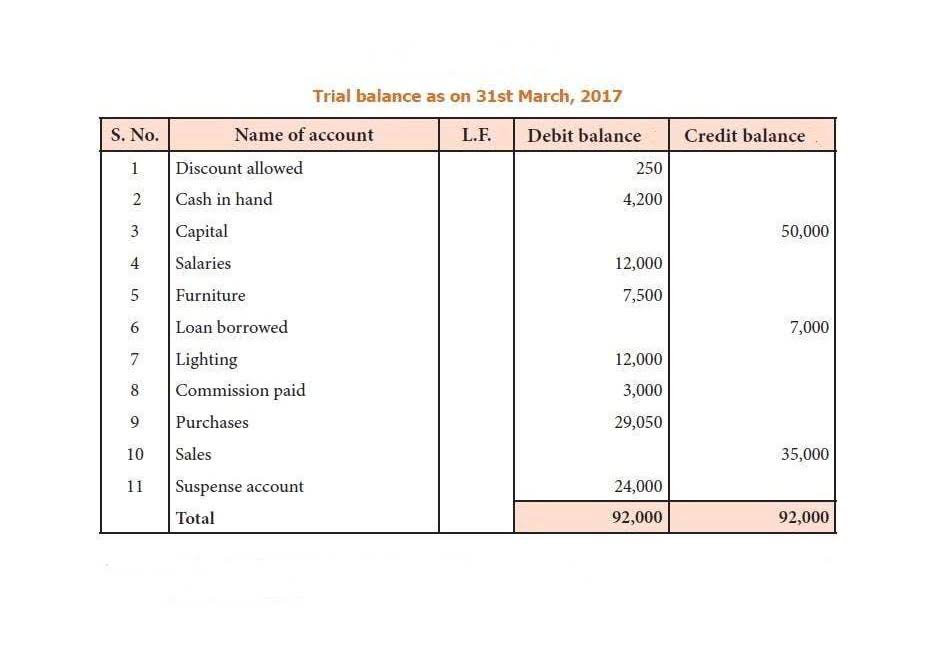
These Financial Forecasting For Startups entries are crucial for tracking inventory levels and calculating cost of goods sold (COGS) accurately. Accurately tracking Cost of Goods Sold (COGS) and managing inventory is crucial for understanding profitability and making informed business decisions. Let’s break down how these two concepts intertwine within your sales journal entries.

Double Entry Bookkeeping
Knowing trial balance when to make a journal entry can help you keep your financial records up-to-date and manage receivables more efficiently. Let’s look at examples of how credit sales journal entries are recorded in real business scenarios. Providing a credit sales journal entry is when a business sells items to a customer on credit (i.e. allowing the customer to pay at a later date). At the time of the sale, the business recognizes the revenue and recognizes the accounts receivable due from the customer. Cash sales journal entry record the cash sales that businesses have made. The nurturing journal entry keep records of the cash entering.
Intercompany Transactions Journal Entries Examples

Apple Inc is a laptop and computer dealer, and it sold goods to John Electronics on January 1, 2018, worth $50,000 on credit. It means John Electronics must make the payment on or before January 30, 2018. If your business deals with inventory, you need to make a second journal entry to reflect the reduction in inventory. Some businesses may record the full amount and a separate discount entry for detailed tracking.
- ‘Debit’ (Dr.) and ‘Credit’ (Cr,) are the two terms or signs used to denote the financial effect of any transaction.
- You issue an invoice with specific payment terms, usually ranging from 15 to 90 days.
- These records capture key details about each sale, making it easier to stay compliant with regulations and maintain a clear record of your financial activities.
- When following double-entry bookkeeping there needs to be at least 1 debit & 1 credit.
- Sale tax payable is the current liability on the balance sheet which the company has to pay to the government base on the promised date.
GST Journal Entry CPA Questions
To create a sales journal entry, you must debit and credit the appropriate accounts. Your end debit balance should equal your end credit balance. As a refresher, debits and credits affect accounts in different ways. Journal entries are the first step in the accounting cycle and are used to record all business transactions and events in the accounting system. As business events occur throughout the accounting period, journal entries are recorded in the general journal to show how the event changed in the accounting equation. For example, when the company spends cash to purchase a new vehicle, the cash account is decreased or credited and the vehicle account is increased or debited.
GST Journal Entry: Sales, Purchase and Input-Output Full Format

You will also get a clear idea about the journal entry for sales of goods on credit, how to represent credit sales return journal entry, and how to deal with taxes. Additionally, this guide will also address credit sales with tax journal as well and real credit sales journal entry example practice makes you easy. We will also clarify the difference between cash sales and credit sales journal entry.
GST Journal Entry ACCA Questions
When you are done, try comparing them to the list of journal entries below. These transactions will also be listed in chronological order to help ensure the data is manageable. A company sells $1,000 worth of goods to a customer on credit.
- Small Finance International Ltd was incorporated in April 2019 with the capital initially of 10,000 common stocks of $ 10 each.
- This involves making corresponding debits and credits in the sending and receiving subsidiaries to accurately capture the financial impact of the transaction.
- We cover the main types of sales journal entries, how to record them step by step, and special considerations for different business situations.
- If this resonates with your business needs, consider exploring automated solutions like HubiFi to simplify your revenue recognition and ensure ASC 606 compliance.
- Prepaid expenses will need to be adjusted as time passes, and to do this, debit the appropriate expense account and credit the prepaid expense account.

It also shows up as cash under the current assets section of your balance sheet. In this guide, we’ll dive into how to make a cash sales journal entry. But before we get our hands dirty, let’s make sure we’re on the same page about what cash sales are and the basics of journal entries. Businesses exist to meet a need and, let’s be honest, to make some profit along the way. To make what is a sales journal that happen, they sell goods or provide services to customers in exchange for payment. And to keep track of all that incoming dough, companies use a cash sales journal entry.





